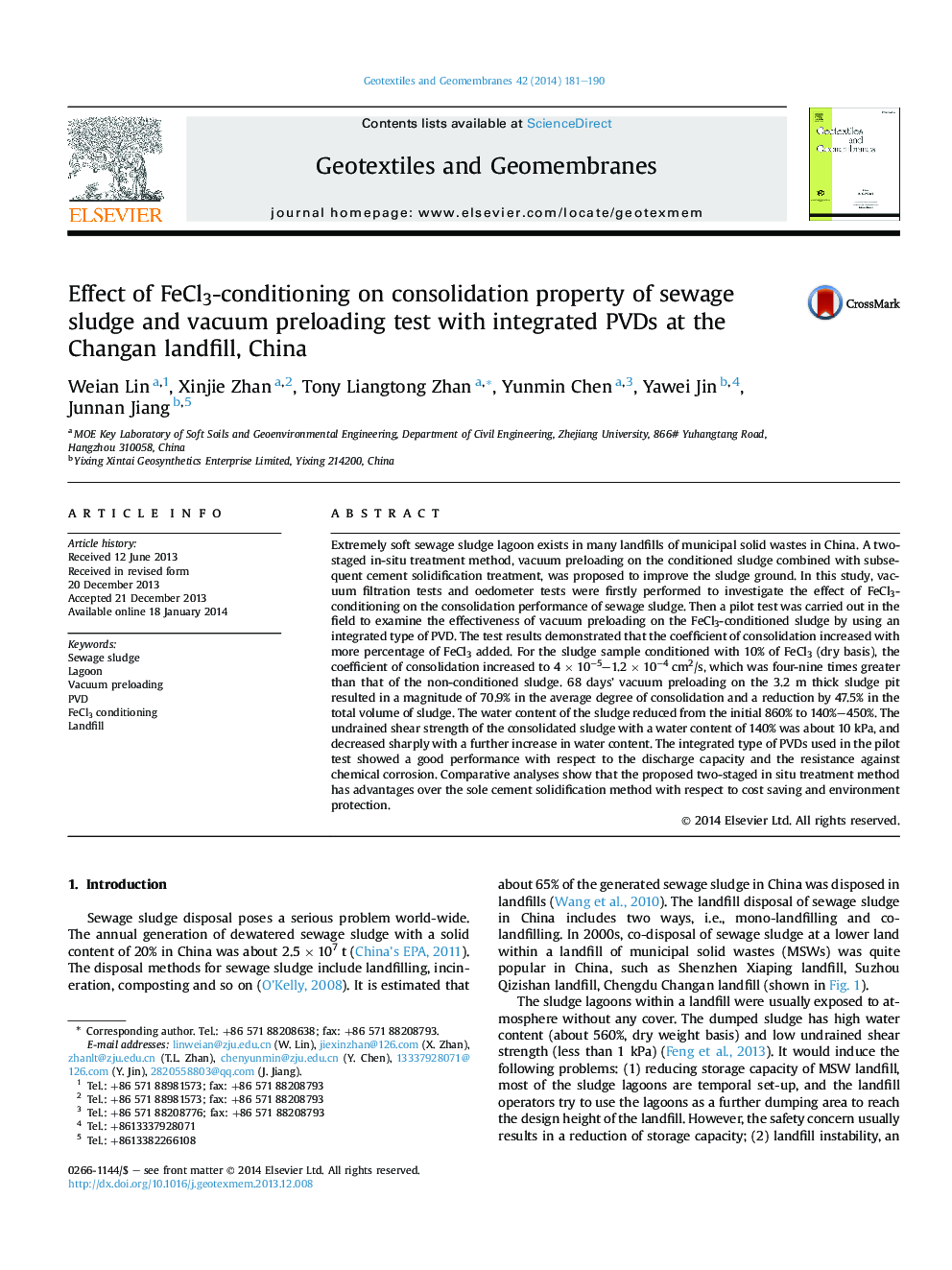| Article ID | Journal | Published Year | Pages | File Type |
|---|---|---|---|---|
| 274071 | Geotextiles and Geomembranes | 2014 | 10 Pages |
Extremely soft sewage sludge lagoon exists in many landfills of municipal solid wastes in China. A two-staged in-situ treatment method, vacuum preloading on the conditioned sludge combined with subsequent cement solidification treatment, was proposed to improve the sludge ground. In this study, vacuum filtration tests and oedometer tests were firstly performed to investigate the effect of FeCl3-conditioning on the consolidation performance of sewage sludge. Then a pilot test was carried out in the field to examine the effectiveness of vacuum preloading on the FeCl3-conditioned sludge by using an integrated type of PVD. The test results demonstrated that the coefficient of consolidation increased with more percentage of FeCl3 added. For the sludge sample conditioned with 10% of FeCl3 (dry basis), the coefficient of consolidation increased to 4 × 10−5–1.2 × 10−4 cm2/s, which was four-nine times greater than that of the non-conditioned sludge. 68 days' vacuum preloading on the 3.2 m thick sludge pit resulted in a magnitude of 70.9% in the average degree of consolidation and a reduction by 47.5% in the total volume of sludge. The water content of the sludge reduced from the initial 860% to 140%–450%. The undrained shear strength of the consolidated sludge with a water content of 140% was about 10 kPa, and decreased sharply with a further increase in water content. The integrated type of PVDs used in the pilot test showed a good performance with respect to the discharge capacity and the resistance against chemical corrosion. Comparative analyses show that the proposed two-staged in situ treatment method has advantages over the sole cement solidification method with respect to cost saving and environment protection.
